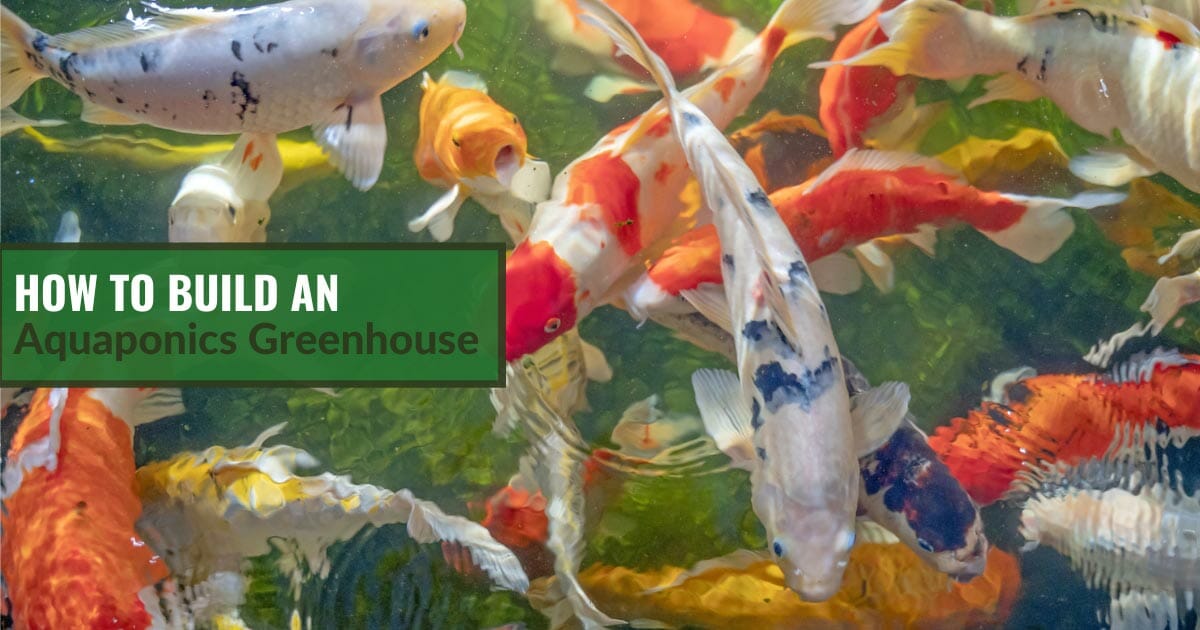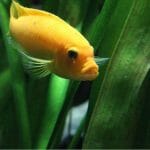
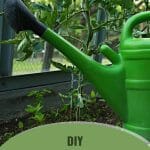
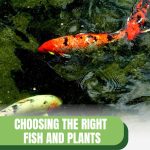

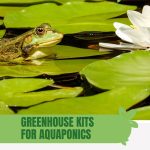
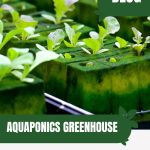
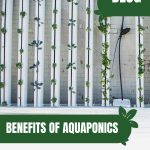
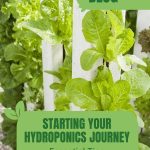
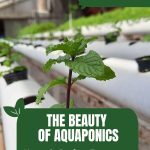
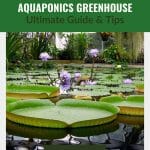
Aquaponics is an increasingly popular food production system blending principles of aquaculture and hydroponics. North America occupies a huge share of this growing practice, so it’s hardly surprising that so many Americans are trying to figure out how to build an aquaponics greenhouse for themselves.
While it might seem a bit daunting at first, it’s actually pretty simple once you wrap your head around the basics. Luckily, we’re here to help out.
This aquaponic greenhouse setup guide is filled with all you need for a rewarding aquaponic gardening journey. We’re sure it will inspire you to get out there and get started.

What this article covers:
- Aquaponics – the basics
- Building your own aquaponics greenhouse
- The finishing touches on your aquaponics greenhouse
Aquaponics – the basics
Aquaponics is more than just a gardening or food-growing style. It’s the facilitation of an entire ecosystem. It takes advantage of basic biological processes and offers many rewards to those keen on growing fresh produce with a more natural approach.
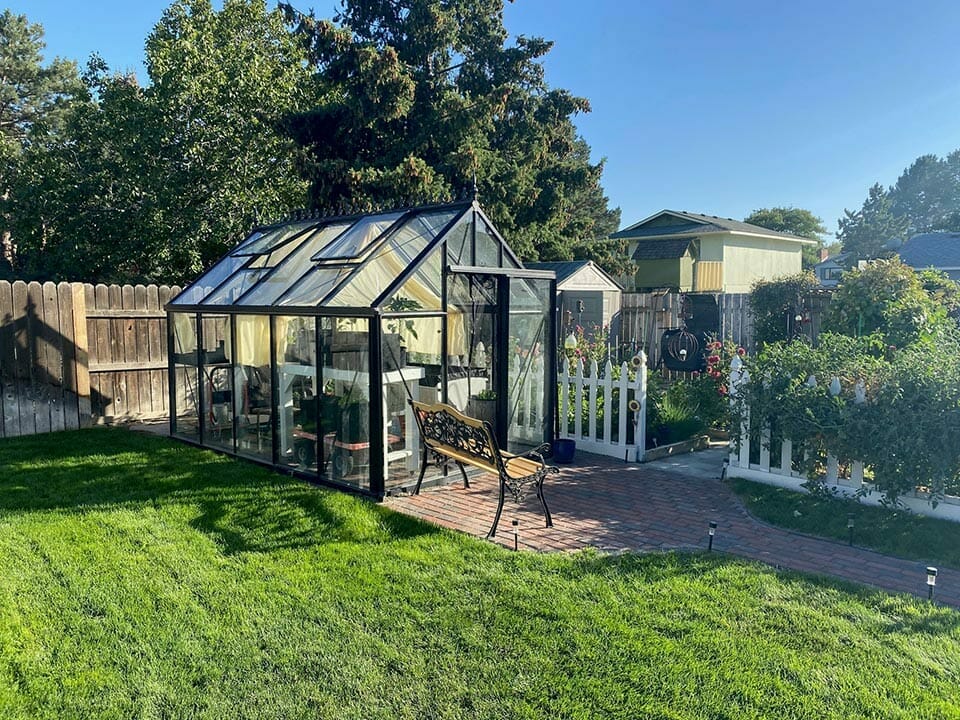
It uses processes of aquaculture and agriculture, in harmony with each other. Let’s explain.
Like hydroponics, aquaponics does not require soil. Instead, a nutrient-rich growth medium is used. Where they differ is that aquaponics relies on live fish to fertilize the plants with their waste output in the water.
The benefits are:
- Less maintenance – it’s a fully contained ecosystem
- Better growth
- Higher quality of food production
- Fewer diseases entering the freshly grown food supply
Aquaponics can be scaled up or down to meet your needs. If you have a bit of land, and the desire to grow your food, you can do it! All it takes is the right supplies and some basic knowledge about how nature works and how things grow.
Aquaponics allows you the joy of fish farming and vegetable growing, in one sustainable and eco-friendly setup. Now that you’ve brushed up on the basics of aquaponics, let’s turn our attention to your next step: your aquaponic greenhouse setup.
Can you use a greenhouse kit for aquaponics?
Yes, you can use a greenhouse kit for your aquaponics system. The most important things to remember though, are the correct choice of fish and plants, as some are more suited for aquaponics than others.
Aquaponics requires less labor, energy, and even less water than traditional agricultural methods. The nutrient-dense water from the fish tank fertilizes your plants, much like the fish waste in water found in lakes or rivers would.
These nutrients and the water are recycled in a closed-loop manner. Thus this is an economical, sustainable, and environmentally-friendly option for anyone wanting to grow their produce naturally, with as little impact on the environment as possible.
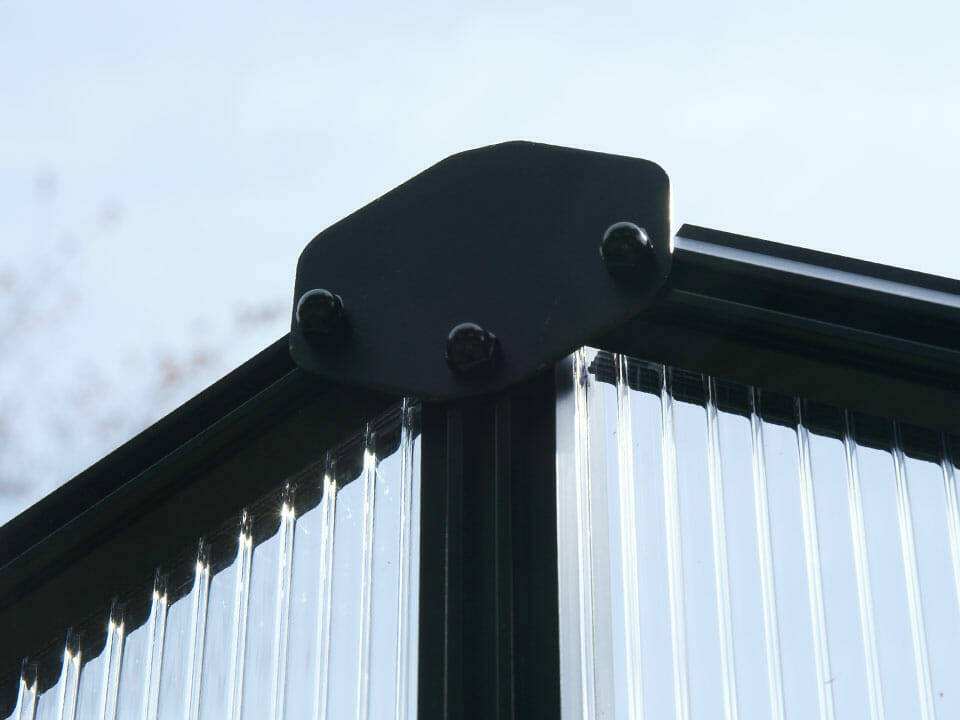
These are some of the most successful aquaponic fruit and veg choices:
- Bananas
- Beans
- Carrots
- Cucumbers
- Kale
- Lettuce
- Peppers
- Spinach
- Strawberries
- Tomatoes
- Watercress
What about the light requirements?
Natural sunlight is the best choice in the right climate/location and the season allows for it. And the best direction for a greenhouse to face is generally toward the most sunlight. The orientation is especially important for a solar greenhouse design.
Not only plants, but fish too, are healthier if they get daily light. If your greenhouse doesn’t necessarily have an abundance of direct sunlight, invest in artificial lights designed for this purpose.
Building your own aquaponics greenhouse
A DIY aquaponics greenhouse isn’t as much of a challenge as you might think. The recycled system of supplying water and nutrients pretty much takes care of itself.
Aquaponics greenhouse planning, assembly, and construction
The basic process of constructing an aquaponics greenhouse is the same as any other, so be sure to check out our article on how to build a greenhouse to get all the information you need on things like setting up the foundation, frame, and covering.
It’s only once you get into any of the watery bits that things get a little tricky.
The unique steps for an aquaponics greenhouse system are:
Setting up your fish tanks
If you’ve ever kept a fish tank, this bit will be second nature to you. Set up the fish tank as if it were any other aquarium, giving it a good clean and filling it with water. Let the water sit for at least 12 hours before adding any fish to allow any chemicals to dissipate.
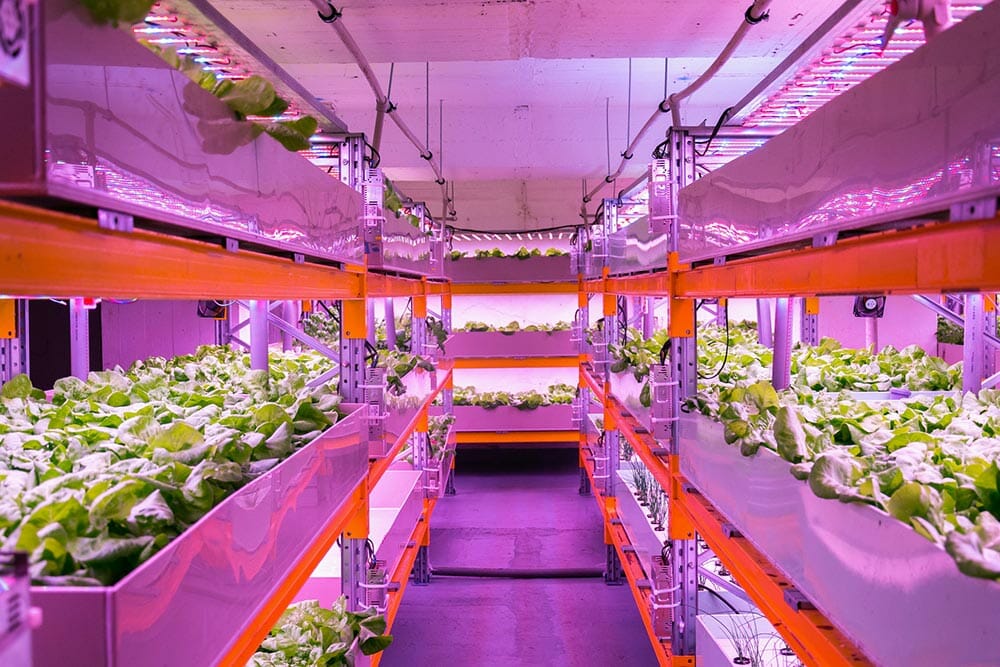
Give the tank a good layer of substrate, and make sure you have a pump that can move water from the tank through your aquaponics system.
When populating your tank, keep in mind the size requirements for fish. The general rule of thumb is that 1 gallon of water can support 1 inch of fish. Any more than that, and you risk throwing off the biomass balance of your system.
Since the plants in your aquaponics greenhouse are going to break down the waste products from your fish, you can get away with a little more.
Setting up your plants
There are a few different aquaponics setups that determine exactly where and how your plants get their nutrients from your water system.
The first option is a deep water setup. Here, your plants float in an aerated medium like oasis directly above the water system. This is generally used for large, commercial setups. It’s a low-maintenance solution, but it does mean that you have enormous tanks that can be tricky to clean.
The second, more likely option is a water-fed system. This setup means your plants don’t need any rooting medium to grow: their roots sit directly in the water and draw all the necessary nutrients from fish waste pumped through.
For this setup, the easiest solution is to drill small holes in a PVC pipe. Secure the pipe above the tank and pump the water into one end, allowing the other end to drain back into the tank. Once you’ve grown seedlings, you can move them into the slots you made in the pipe and they will rapidly grow to maturity.
The final solution is a media bed setup. This is pretty similar to the previous option, but your plants’ roots are not free-standing. With this setup, fill a tray with a growing medium like clay pebbles or stones and pump the water through that.
Which greenhouses are suitable for aquaponics?
A greenhouse made of any number of materials will work for aquaponics. Plastics, metals, or wood frames covered with glass or even polycabonate can work.
But your greenhouse will still need ventilation. This is crucial whether you’re setting up a greenhouse for nurturing your most delicate flowers or starting an aquaponics greenhouse. Not to worry; we have greenhouse windows for sale to meet this need.
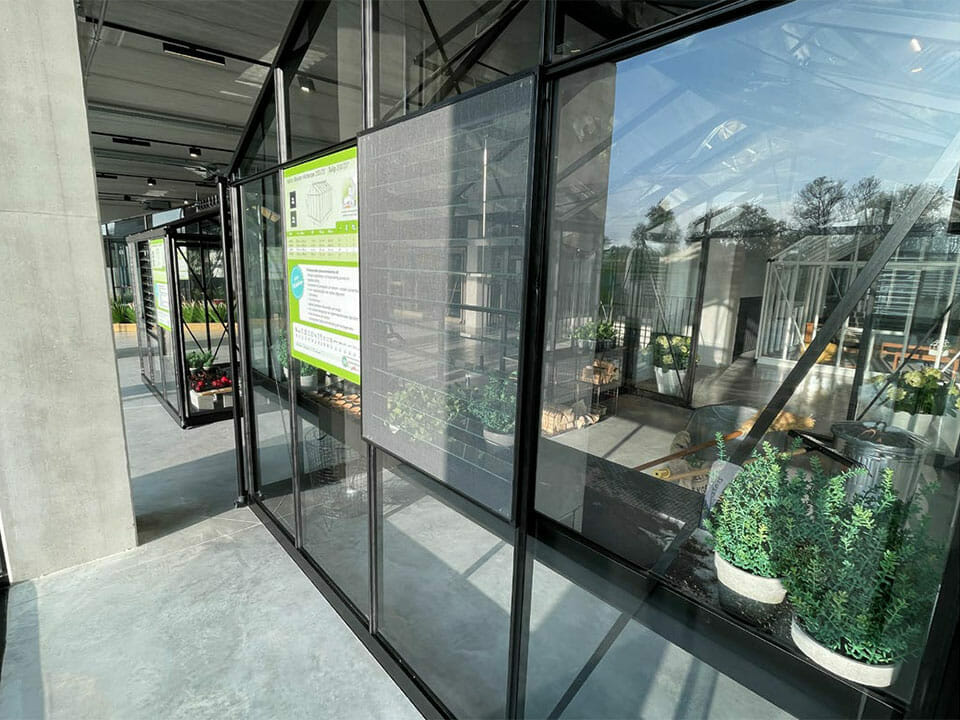
If you’re wondering where to position a mini greenhouse for aquaponics, this isn’t as crucial as you might think. It all depends on whether or not you’re relying on natural light or grow lights.
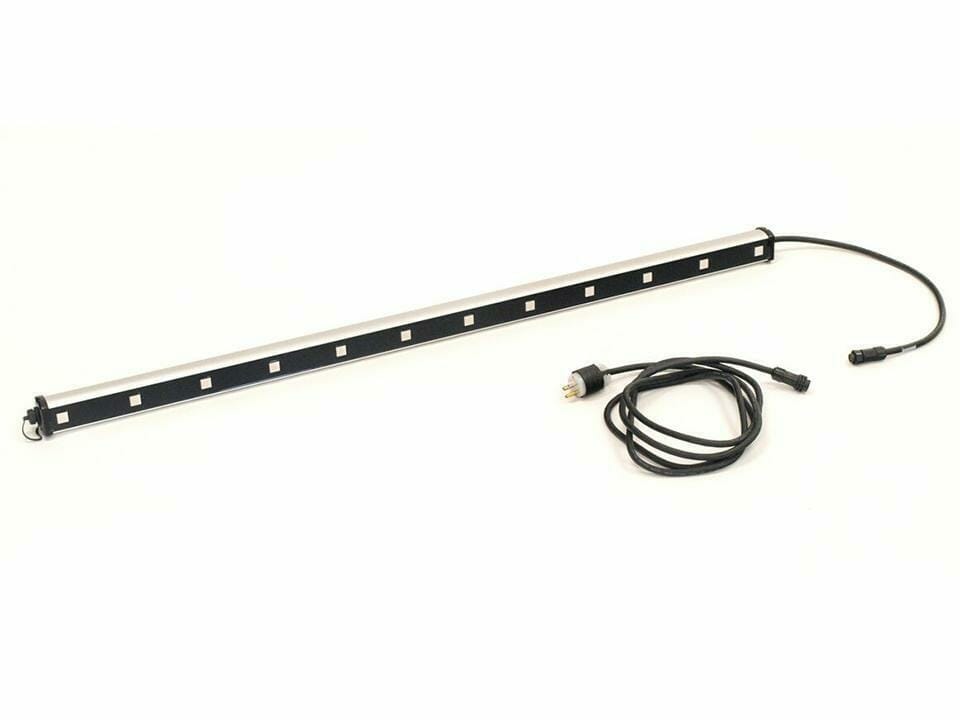
The Mont Base Greenhouse Kit is ideal for all types of greenhouse gardening and for a mini aquaponics system. Proudly made in the USA, it features a built-in rainwater gutter system, automatic roof ventilation, and dual-hinged locking doors.
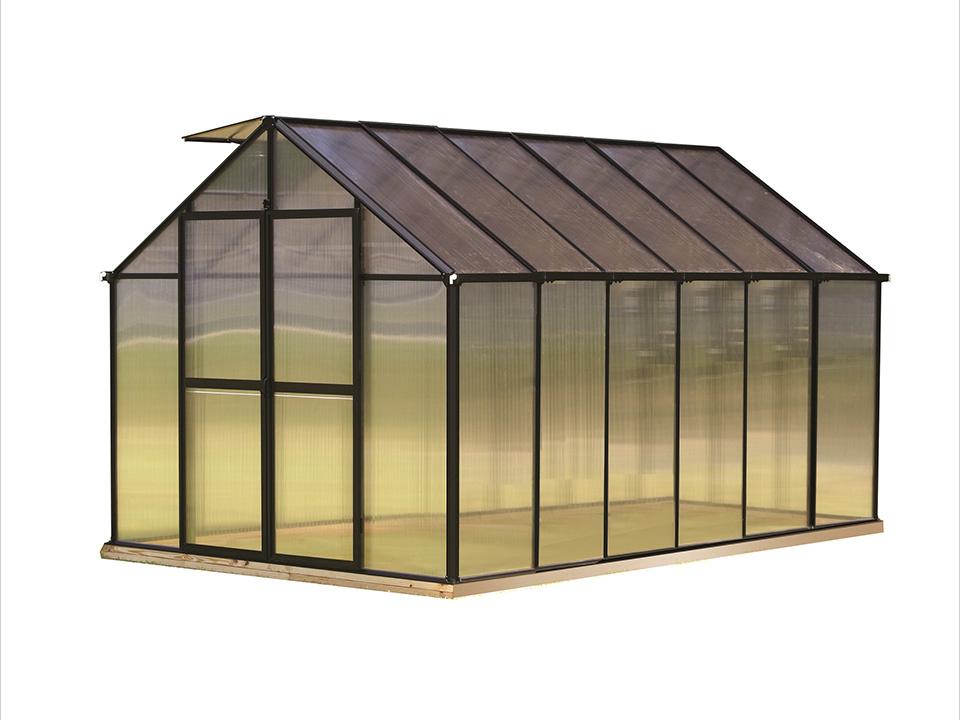
The Premium package includes interior shading and a fitted workbench. Thermostat controls, tinted roof panels, and an electric ventilation system are included with the Mojave and Grower packages.
Can’t find what you’re looking for? We also offer customized Janssens greenhouses for your every need.
Tips for starting aquaponics
- Position the plants in the sunlight (or growing lights, if not much sun) and the fish in the shade.
Too much direct light facilitates algae growth and even kills fish. Plants, however, have higher light needs.
- Insulate/shade your greenhouse for maximum efficiency.
If you live in a climatic zone that gets extreme temperature fluctuations like very hot summers or very cold winters. Insulation material and shade cloth are key to avoiding the issues of overheating and too much cold.
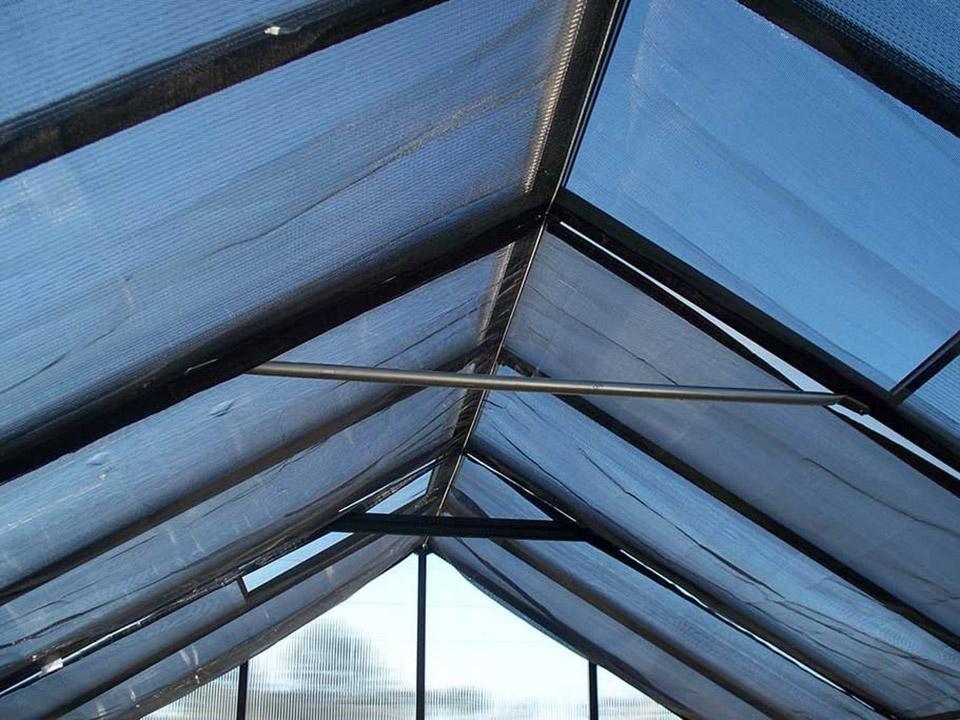
- Match the fish to the climate.
Some species of fish, like perch or koi, don’t require the warm temperatures of other fish. They are more likely to survive and thrive in cooler climates with less heating. Also make sure that you choose compatible species that not only get along with each other, but play different roles in the nitrogen cycle.
- Choose a floor with good drainage.
Dirt floors can get too muddy, and while concrete will overcome this, it’s a more expensive option. A gravel floor, with PVC pipe drainage, is far easier to set up, and quite economical too. Gravel also provides good drainage.
- Get an expert to help with the initial electrical setup.
Your fish tanks will need water pumps (and maybe air pumps) so unless you’re an electrician or have a lot of expertise in this area, get an expert to wire up your greenhouse. They will best be able to advise you on your power needs, after discussing what you need in your greenhouse.
The finishing touches on your aquaponics greenhouse
Are you ready to venture into the world of aquaponics agriculture? With the right greenhouse DIY kit, some planning, a fish tank, and some fish, you’ll be on your way. We’re always happy to help, so contact us for more product information, advice, or anything else you need.

